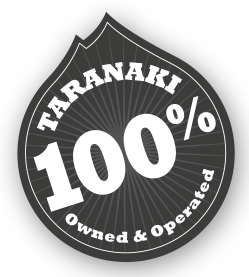What is Fibre Optics?
Fibre optic cable in essence, is a hair-like glass conduit that carries virtually any type of signal from one point to another at light speed. In case you are wondering why light traveling through fibre optic cable does not actually travel at true light speed, it is because the glass that makes up fibre optic cable is denser than the vacuum of outer space where light can travel without disruption. Needless to say, a fibre optic light signal is still much faster and far superior to a copper based signal, which is why it has become so popular in the cable television, telecommunications and computer networking. Unlike copper based signals, fibre signals are not affected by external power sources or surges and there is no need for shielding or grounding.
How are Fibre Optics used today?
Today, practically every communication network contains fiber optics. In most cases, fibre optics are used because of their convenience. Fibre optic cable allows network builders to divide their network into smaller service areas that prevent large numbers of customers from being affected in an outage. The result is better service and customer relations. Fibre optic cable also gives them a fast return path which they use for internet and telephone connections, thereby increasing their revenue potential. Local Area Networks (LANs) use fibre optics primarily in the backbone of the network, but the use of fibre optics to the desk is increasing. The LAN backbone often needs longer distance transmissions and more bandwidth than copper cable is capable of providing. Fibre easily offers the higher bandwidth needed to prepare the network for the much higher speeds projected for the near future. The use of fibre optics is not just limited to communication networks. Cable and telephone providers often use fibre for its distance capabilities. Distance is also an advantage to industrial plants that use vast amounts of fibre primarily for its noise immunity. Utilities also prefer fibre for noise immunity, security and high bandwidth properties. The military uses fibre because it’s nearly tap-proof and impossible to jam. Fibre is even used by the aviation and aerospace industries because of its smaller size and weight.
What are the advantages of Fibre Optics over Copper wire?
Fibre’s extra distance capability and seemingly unlimited data rate makes it possible to do things not possible with copper wire. For example, you can install all the electronics for a network in one communications closet for a building and run straight to the desk with fibre. With copper, you can only transmit about 90 meters (less than 300 feet), thus requiring more telecom closets in each building. With fibre, you only need passive patch panels locally to allow for moves. Upgrades can be rather difficult with copper wire, but not with fibre because the real capacity of fiber is only partially utilized at today’s network speed. Many use fibre to connect all their central offices and long distance switches because it has thousands of times the bandwidth of copper wire and can carry signals hundreds of times further before needing a repeater. The cable and telephone providers use fibre because it gives them greater reliability with the opportunity to offer new services, like digital phone service and internet connections. They also use fibre for economic reasons, but their cost justification requires adopting new network architectures to take advantage of the fibre’s strengths.
Fibre Optic Splicing
Trunk and backhaul networks demand very low splice loss, achieving quality results with fibre optic networks requires high skill, fastidiousness and quality equipment. DataTalk own a Fibre Splicing Machine and our equipment is amongst the most modern in New Zealand, we have staff that have been splicing fibre for years, so they know what they are doing We are also constantly training staff and developing their skills and understanding of the medium.
Telco Network Design
With two experienced network designers … whether its fibre or copper, campus or external network we can design a solution to meet your requirements.
Cable Hauling
Installing cables in ducts can be dirty and hard work however we have it covered, we have the right equipment, we have the right staff and we have years of experience, Copper, Fibre or Subduct we’ve carried out many successful projects for our clients all over Taranaki.
Consultation
We can help design and specify your next project to ensure you achieve the desired results. Call us to get the right advise for your next Fibre Project.








